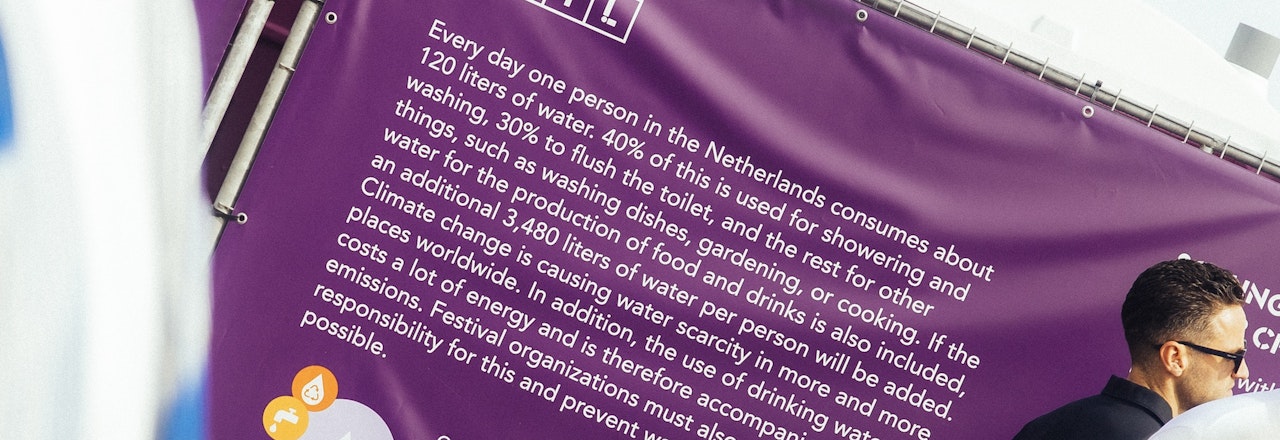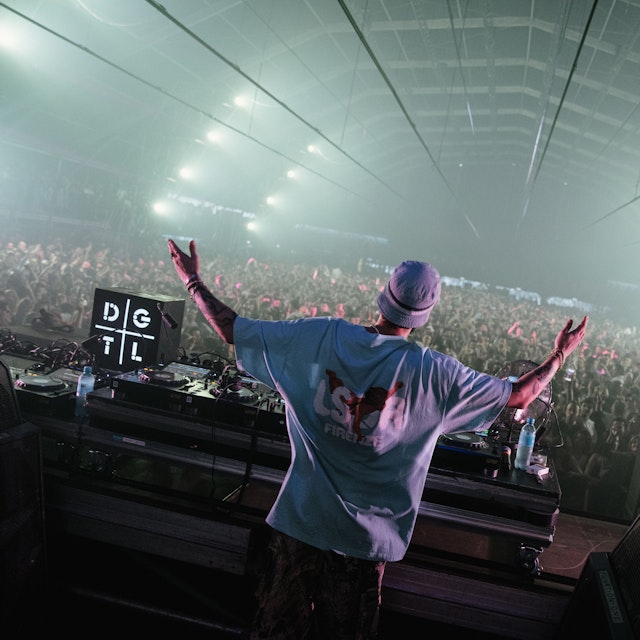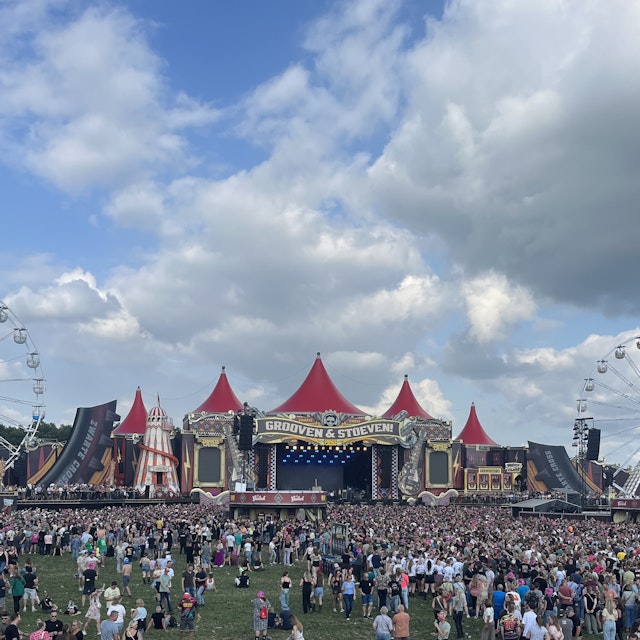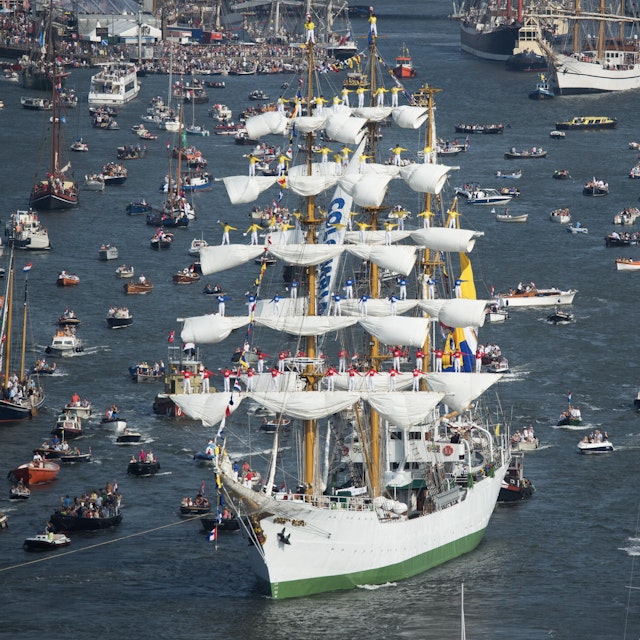From Urine to Fertilizer: Circular Water Solutions at Festivals
Last year, the collaborative project Scaling Up Circular Water Chains Events kicked off at Zwarte Cross in the Dutch Achterhoek. 53 European festivals, together with the Ministry of Infrastructure and Water Management, are working to speed up the transition to circular water chains at events and beyond. At the festival sites, innovative solutions find both a podium and a living laboratory. This year, the collaboration is covering new ground at Decibel, Awakenings, DGTL, and SAIL 2025.
“We urgently needed a solution for dealing with wastewater at Zwarte Cross, because of tighter legislation,” says Christiaan Elings, program manager at Green Deal Circular Festivals. After getting together with several parties, the collaborative project was born. Since each water challenge the Netherlands faces also applies to the events industry, festivals can serve as a valuable testing ground for innovative solutions benefiting water authorities, drinking water companies as well as both provincial and municipal authorities. The events function as living laboratories: clearly defined environments with a high number of guests where innovations can be tested in a short amount of time. Festivals also offer a unique chance to engage with audiences that are usually hard to reach for governments, Elings says. “Themes like water shortages, flooding, and water quality can be highlighted and integrated in communications and campaigns. That makes festivals not just living labs, but windows to society, places where awareness, support, and sustainable behavior can grow.”
The collaboration is focused on testing and applying scalable solutions and innovations, supported by research. “That’s how we’re collecting the knowledge we need to be able to make decisions about the solutions a specific situation requires and to develop effective interventions to encourage behavioral change. We also gain insights needed to deal with obstacles like regulations. The process of testing, doing research, and inspiring others is essential in scaling up – within the events industry as well as in other sectors and in wider society.” Each of the participating events is eager to share their experiences with other festivals, all hoping that the tested innovations will eventually be widely applied. “We’re excited about the results and insights from the tested innovations coming out of Zwarte Cross and DGTL and can’t wait to find out about the innovations that will be tested at SAIL, Awakenings and Decibel,” program manager Laura van de Voort says. Anyone interested in the progress of this collaboration or in joining up, can sign up for the Community of Practice newsletter or contact her directly at [email protected].

DGTL joined the collaborative project this year. Their aim: gaining a clear picture of the festival’s water balance. Esmee Bouwmeister, DGTL’s sustainability manager, talks about one specific part of that project: collecting urine to turn it into fertilizer. “At DGTL, we tried to collect as much urine as possible, right at the source, through (unisex) urinals, enabling people who usually sit down to pee the option to now do so standing up. We collected about 21,000 liters of urine in total and stored it in a big tank on site. The tank was then transported to Duiven, where the urine was treated and processed into concentrated fertilizer, including ammonium phosphate, and clean water. Part of the fertilizer is now being tested at Wageningen University to use for growing potatoes and another part is studied so it can be used in the process to obtain certification for fertilizers derived from urine.”
“To make this process possible, we had to make changes in the way we work – both in organizing and logistics, from infrastructure to permits. We’ve documented our experiences in a comprehensive memo that can serve as a practical guide for other festivals. Because the more urine we can collect, the bigger the impact. It’s our goal to make the system accessible to other events and contribute to a more sustainable water and nutrient cycle within the festival industry. We approached this mission as an individual pilot project at first, but are now part of a group of festivals who are on the same track, allowing all of us to share valuable knowledge, gather data and create test material that enables scaling up.”

Zwarte Cross takes place in a small municipality with 13.000 inhabitants. That means the local water treatment plant is only built to serve that community, and is not equipped to handle the steep increase in water use and waste during the festival. And on top of that, from 2027 onwards, EU norms for water treatment are tightening. During the festival, four new innovations were tested: two focused on local water treatment, one on purifying urine, and one on reusing gray water to flush toilets. Because of the location’s high sandy grounds, the main concern for the coming years is drought. With dry periods only increasing, that means the festival needs to come up with new and innovative ways to ensure an adequate water supply. Zwarte Cross is aiming to become self-sufficient by laying the foundation for a circular system: producing drinking water from groundwater and discharging treated wastewater locally. Research is also underway to study the feasibility of underground water storage. And that kind of information will be useful for both festivals and daily life.

SAIL 2025, the biggest public event of the year, has also joined the collaborative effort. Sustainability coordinator Eline Elbersen says the event will focus on water quality, conservation, and refining their existing sustainability measures, building on DGTL’s results. “SAIL is a pretty accessible event, with more than 2 million expected visitors, and can function as a bridge between closed events and a truly urban environment when it comes to testing innovations.” The event is experimenting with using natural water filters based on potato starch to improve water quality and testing smart sensors that will bring down the use of drinking water to flush temporary pipes. They’re also using their considerable platform to raise awareness about water conservation and quality.
Original article by Cas Spiertz.
